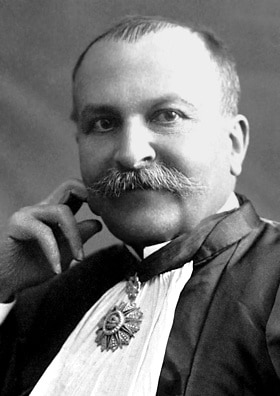
Paul Sabatier
Paul Sabatier (November 5, 1854 to August 14, 1941) Sabatier was a French chemist who shared the Nobel Prize in Chemistry in 1912 for work in organic chemistry that revolutionized industrial chemical production and academic research. (He shared the Prize with Victor Grignard.) His most famous contributions were in the field of catalytic chemistry. Sabatier discovered that trace amounts of nickel facilitate the addition of hydrogen to the molecules of most carbon compounds. The “Sabatier reaction” is the nickel-catalyzed reaction of carbon dioxide and hydrogen to form methane and water: CO2 + 4 H2 → CH4 + 2 H2O. (This is used on the International Space Station to generate water.) An important principle in chemical catalysis is called the “Sabatier Principle.” In much of his work, Sabatier collaborated with the chemist Jean-Baptiste Senderens, who was a Catholic priest. Sabatier was a life-long, pious Catholic. See https://www.chemistryworld.com/features/a-provincial-scientist/3004472.article
Explore Other Scientists
It is our hope that this curated set of biographies will be useful to teachers, students, and the general public.